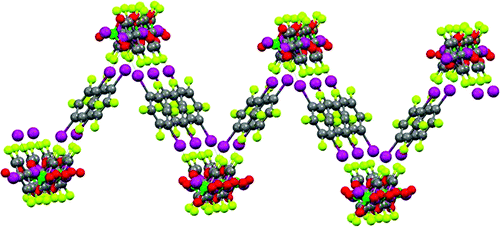
The deliberate construction of (6,3) networks via halogen bond-driven self-assembly of tetra-n-butylammonium perchlorate, periodate, and perrhenate with 1,4-diiodotetrafluorobenzene is reported. The mononegative oxyanions sit at network nodes and work as tridentate halogen bond (XB) acceptors, the diiodobenzene derivative spaces the nodes and function as a bidentate XB donor, while the ammonium cations occupy the space encircled by the supramolecular (6,3) frames. Mixed crystals wherein two different oxyanions statistically occupy the network nodes have also been obtained and show geometrical parameters intermediate to the corresponding pure crystals containing only one of the two oxyanions. Mononegative tetrahedral oxyanions are thus demonstrated to behave as general and effective tectons in anion coordination and anion-templated assembly driven by halogen bonding.